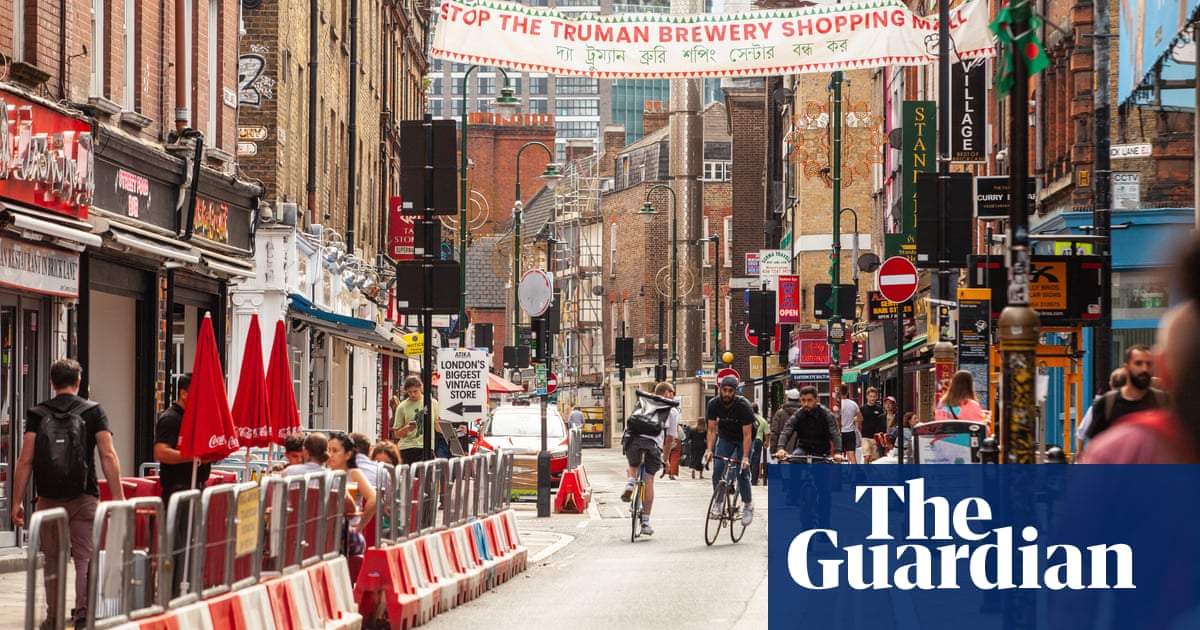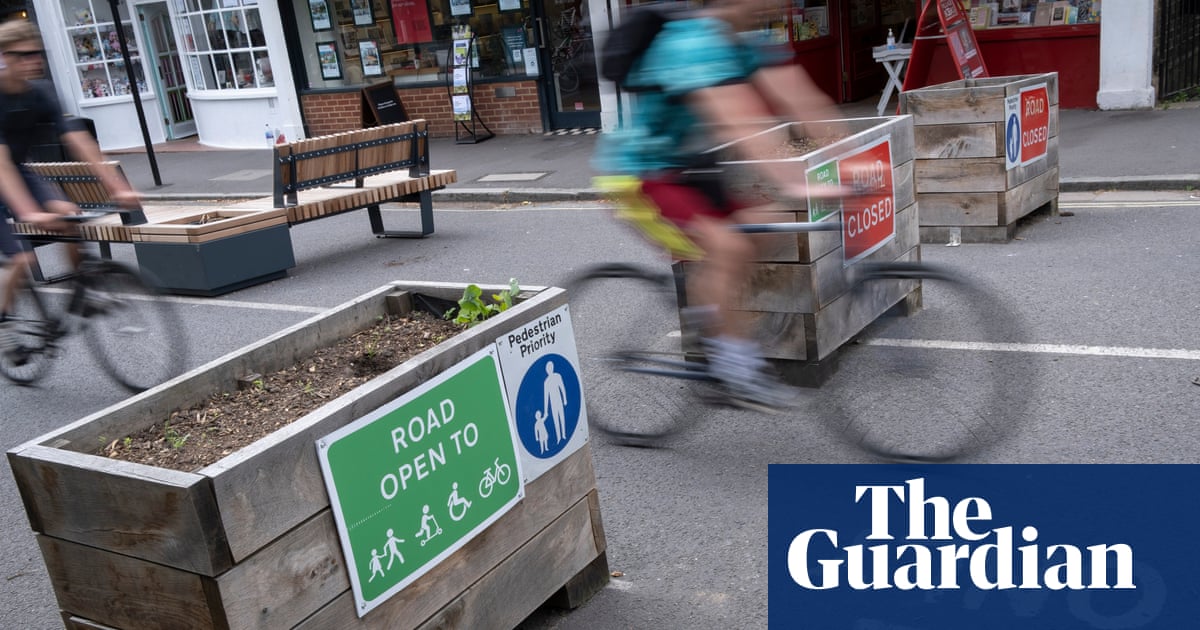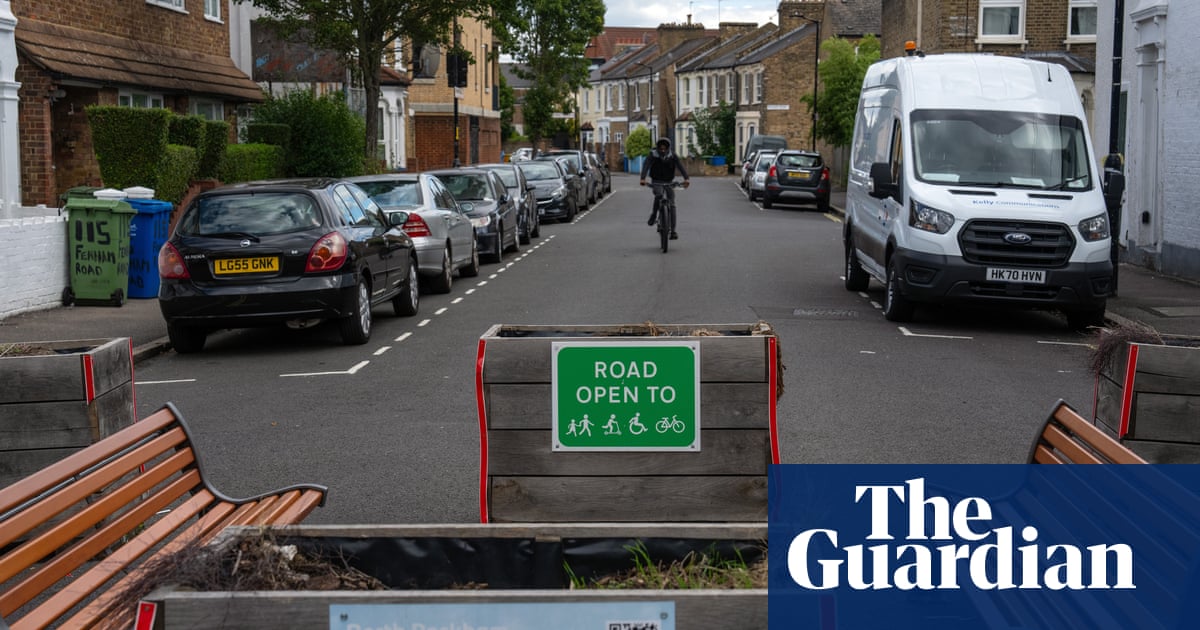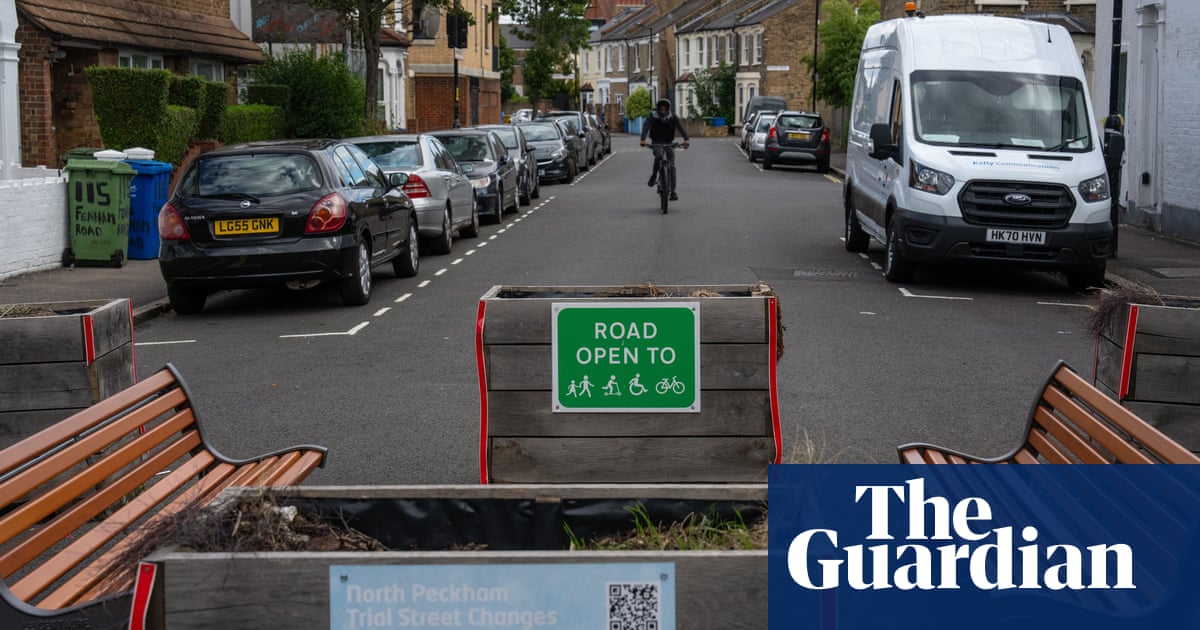
At least 25,000 traffic filters similar to those found in low-traffic neighbourhoods already exist across the UK, research has shown, with campaigners saying it proves both the efficacy of such schemes and the futility of demands to scrap them.
Dozens have been built in cities over the last year by councils seeking to boost walking and cycling levels during the coronavirus pandemic, prompting a sometimes frenzied level of debate.
Low-traffic neighbourhoods (LTNs) use what are known as modal filters to stop through traffic on narrow residential streets. Using bollards, planters or camera-enforced signs at one end of a street, they allow full use for pedestrians and cyclists but make it access-only for motor traffic.
Councils say they are necessary to unclog roads increasingly used as rat runs, often by drivers directed to take circuitous backstreet routes by navigation apps. Government figures show traffic on such roads has increased significantly in recent years; in London it has doubled since 2008.
Opponents say the schemes create more congestion and can delay emergency services. Some, such as the actor and London mayoral candidate Laurence Fox, have called for all LTNs to be removed.
But the study, commissioned by the BikeIsBest campaign, used mapping data to identify 25,676 modal filters across the UK, including bollards, kerbs, planters and gates. The real number is likely to be significantly higher. Many are part of traffic-reduction schemes created over decades, now barely noticed.
London has nearly 3,700 such schemes, the analysis showed, while there are more than 1,500 in Greater Manchester, 1,000 in West Yorkshire and 800 in the West Midlands.
Adam Tranter from BikeIsBest said the bulk of these filters were “part of everyday life for communities and have brought no known concerns about traffic displacement or emergency service access”.
He said: “There’s been a lot in the news about LTNs, but the reality is that these are not new concepts. They are a natural response by councils to the changing traffic patterns as cities grow, and have become a standard feature in the design of new towns since the 1960s.”
The aim of LTNs, when used with other interventions, is to gradually reduce the overall number of car journeys, in part because some short car trips are less convenient, but also because streets are made more appealing for walking and cycling.
While there is evidence of this happening as a result of some UK schemes, and despite LTN-type systems being ubiquitous in mass-cycling countries such as the Netherlands, critics have said that some LTNs are too piecemeal to do more than simply divert traffic.
Even though they support the general principle, some emergency services have also raised concerns that new physical filters could be difficult for crews and have asked to work with councils on the design.
But low-traffic campaign groups said the new research showed that the public debate over LTNs was over-hyped and overheated. “The term ‘low-traffic neighbourhoods’ has become a bit of a rallying cry for the anti-cycling lobby, but as this research shows, while it’s a new name, the idea itself isn’t,” said Duncan Dollimore, Cycling UK’s head of campaigns.
“It should come as no surprise that people want less traffic where they live, that they want a place where the air is clean and their children can play in safety. What is baffling is the resistance to something which creates streets for people, improves our towns and cities and has been around for decade.”
Mary Creagh, the chief executive of Living Streets, which campaigns for more everyday walking, said: “Low-traffic neighbourhoods have been around for decades, supported by the silent majority of people who want healthier, safer streets. It’s time for town and city leaders to switch from grey to green, and build back better in communities post-Covid.”












